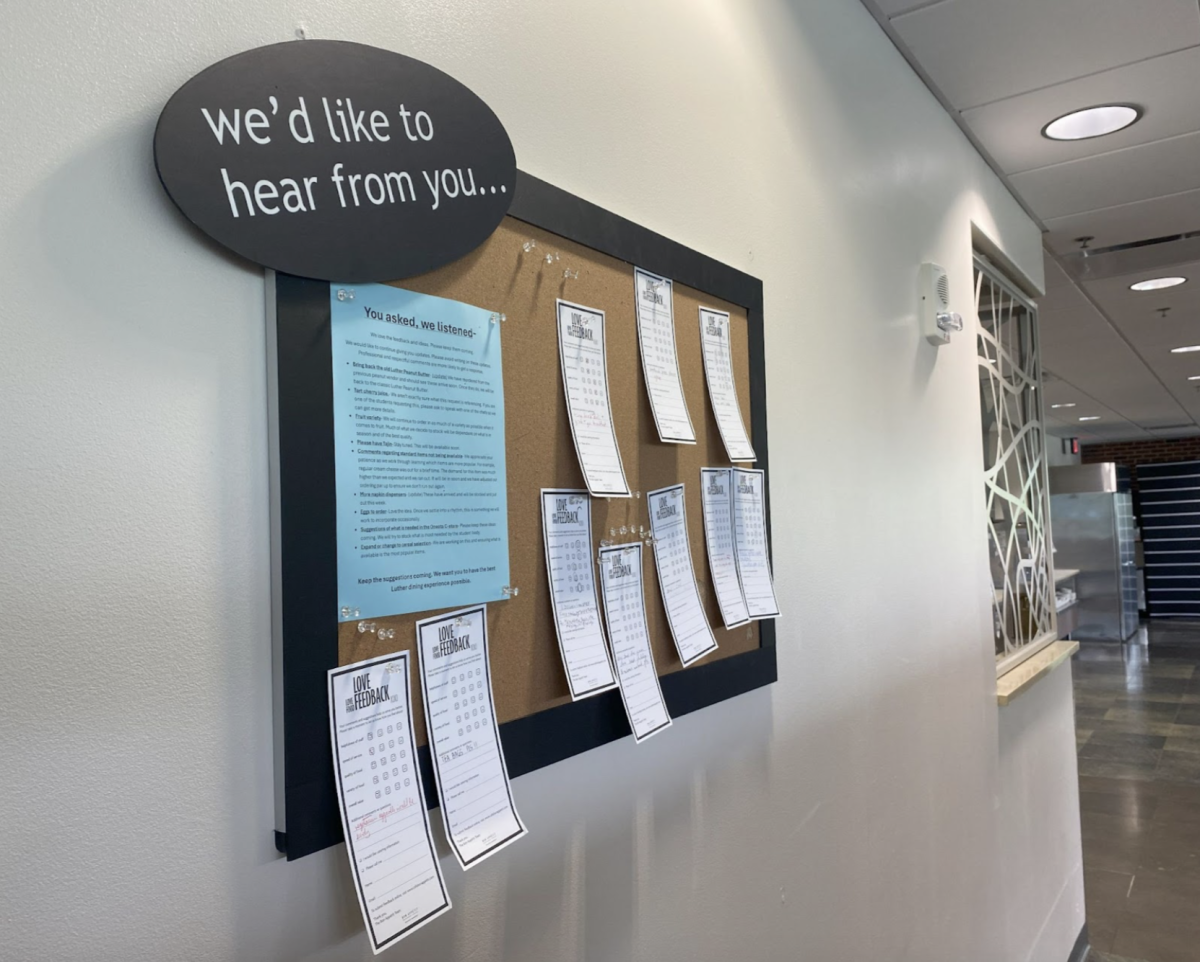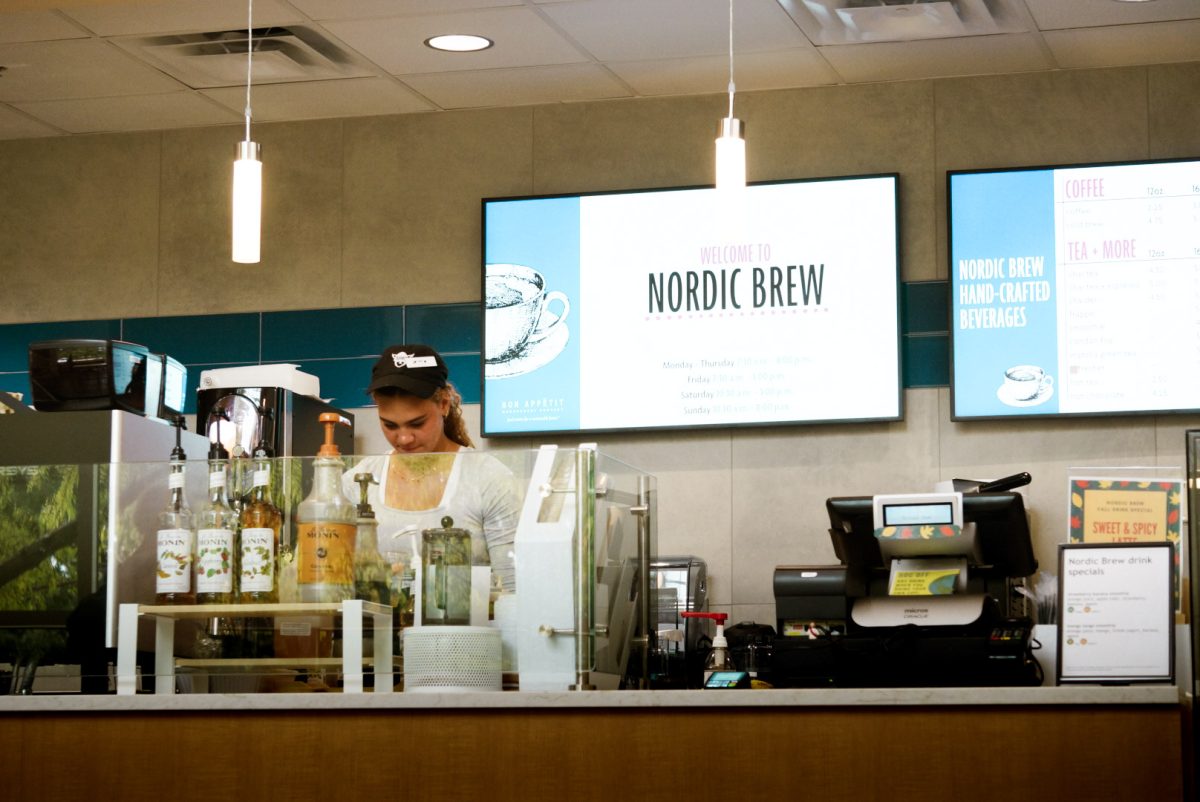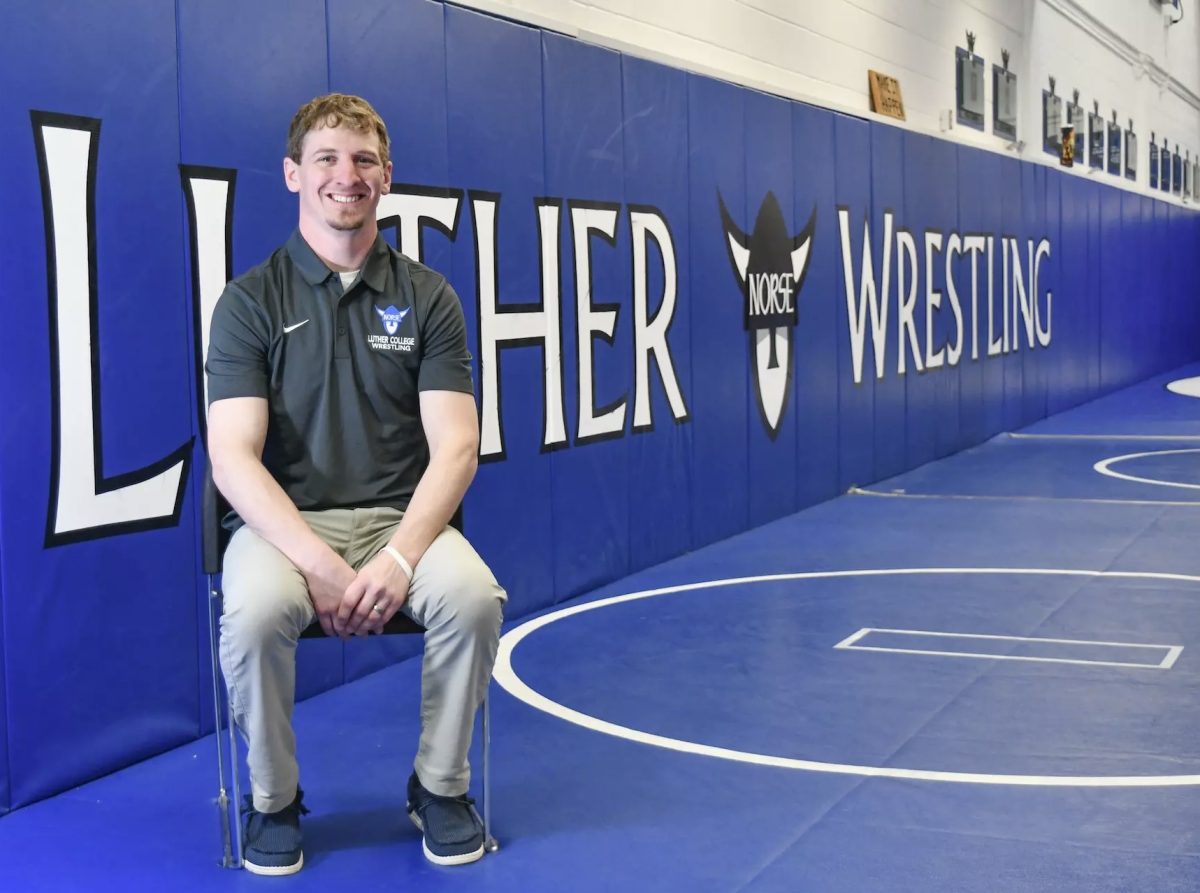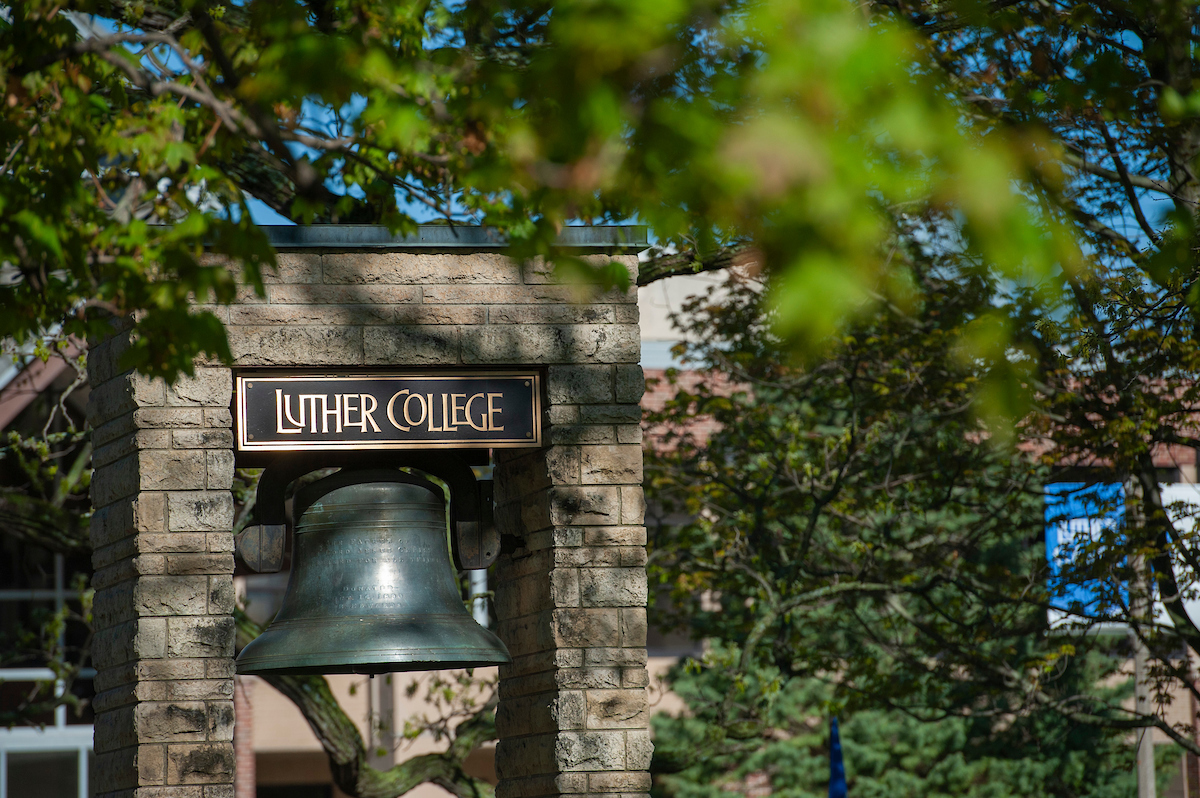On June 1, Bon Appétit took over as Luther College’s food services provider. Since then, students and staff alike have been adjusting to the changes made to the cafeteria and other eateries on campus.
For the past sixteen years, Luther College’s food services have been managed by Sodexo, a French catering company, which ran the cafeteria with a buffet-style structure. Last spring, the campus administration selected Bon Appétit as a new food provider, a decision settled by the Board of Regents. After the switch was finalized, Bon Appétit began making changes to the cafeteria and other dining locations on campus, such as Marty’s and Nordic Brew. Some changes were significant, such as relocating Nordic Brew from the lower floor of the Union to the upper floor. Other changes were more subtle, such as the wider variety of pastries provided at all meals.
The general manager of Luther College Dining Services for Bon Appétit, Nic Supercynski, was consulted to speak on the transition. Supercynski identified Bon Appétit as a provider with an emphasis on chef-based, locally sourced food service with a specialty in cooking from scratch.
“All the dressings that we’re making, all the stocks for soups that we’re making are from scratch using real vegetables or real animal bones,” Supercynski said. “All our sauces, all of our salsas, are made from scratch.”
Bon Appétit is introducing multiple new events in the Caf. One of these events was the Lunch Showcase over Family Weekend, during which the Caf provided a plentiful lunch with a bounty of different courses.
According to Supercynski, the showcase was made to “show the parents a snapshot of what we’re giving their kids, or young adults, on a daily basis, and to show that they’re being well taken care of, [that] we’re serving them delicious food.”
Another event was the special Eat Local Challenge, which took place on Tuesday, September 23, where the chefs designed a meal with local ingredients. The only ingredient they were permitted to outsource was salt.
“One of our stations had 100% locally sourced ingredients; it was a hot honey chicken with local mushrooms and potatoes,” Supercynski said. “That’s something we do every year, and as we grow in our partnership here, we expand that and make that a very large, very exciting event.”
Supercynski also recognized the chefs behind the event, giving his “kudos to the team for putting that entirely local menu together.”
Sourcing products from small farms in and around Decorah strengthens bonds between Luther and nearby communities, while also helping small businesses grow. According to Sypercynski, Bon Appétit aims to use 20% of its expenses on food sourced within 150 miles of campus.
Students are taking notice of the Caf’s transformation, and returning students are getting used to the new food service. Some students welcome the new features, while others are critical of certain choices made for the new Caf. Overall, students are pleased with the higher variety and quality of the food being provided. However, many find themselves missing aspects of the old Caf, and multiple people point out the inconvenience of removing self-serve lines. Enya Wallace (‘28) worries about the sustainability-related implications of the shift away from a buffet-style approach.
“I don’t like that it’s no longer self-serve, because I can’t control the portions people give me, I feel like I waste more food,” said Wallace.
Sean Medcalfe (‘27) elaborated on the issue of fewer lines providing self-serve.
“I constantly have to go back and get like, five plates in a meal,” Medcalfe said. “The amount of time I spend getting up and down isn’t great, and even if I ask for more, I feel guilty making people scoop more and more food, even if I know I’m going to eat it. It just makes dining less enjoyable.”
Many have echoed this sentiment, some also fixating on the aspect of timeliness, as lines in the Caf are becoming more common. Kate Szumowski (‘29) is concerned about long lines in the Caf interfering with tight schedules, and considers self-serve to be a faster alternative.
“I did hear [the old Caf] used to be buffet style, which might make it more efficient when I have 30 minutes to eat, sometimes 20, depending on the day,” Szumowski said.
Others, such as Eleanor Lefort (‘27), feel the same about the new structure of the Caf, along with the newly added Nordic Express, which replaces the old Grab and Go station.
“[At Nordic Express,] It takes fifteen minutes to get food,” Lefort said. “Last year, so many people got grab-and-go every single morning for a quick breakfast, because that’s so convenient. It should be open at like, seven.”
Monica Kim (‘28) speculated on the shift to food workers serving students.
“The lines are too long, but I understand that [buffets] might have an issue with food getting contaminated with allergens,” Kim said. “I think pasta, burgers, and burritos could be self-serve in some aspects.”
When asked about the reasoning behind switching away from the buffet-style lines, Nic Supercynski explained the choice was not entirely founded on matters of cleanliness or reducing cross-contamination.
According to Supercynski, the new Caf format allows the staff to manage food waste better, which is important to Luther. He also touched on the social aspects of the change.
“When you have someone serving you food, you get that sense of customer service or hospitality,” Supercynski said. “That is what we want people to feel when they’re eating with us.”
Other common student criticisms are missing items like the Luther Peanut Butter, the rice pot, the water bottle fillers, and a wider range of Cajun options. Students also wish for more options for more restrictive diets in the form of more gluten-free, dairy-free, or vegetarian items. Martine Redshaw (‘28) brought up the latter.
“Please offer more vegetarian options and more variety in vegetarian options,” Redshaw said. “We need more variety than tofu or vegetarian food in one line.”
Despite some unpopular changes, students appreciate the fresh produce and variety of meals introduced by Bon Appétit.
“I like the quality and quantity of fresh foods like the vegetables, the salad line, and the berries at breakfast,” Redshaw said. Edie Meehan (‘26) felt similarly.
“I think the food has a much better quality,” Meehan said. “And there’s more variety in what they have compared to Sodexo, which had different versions of the same thing every day.”
“I think that the food quality is a lot better than in the past,” Sea Orme (‘26) said. “And it just tastes better; it’s actually spicy now, which I really appreciate. There’s flavor.”
Bon Appétit takes student input into account and changes what it provides in accordance with demand.
“We love having student feedback, especially when it’s new,” Supercynski explained. “We really need to understand what everyone’s thinking. [We have] the physical board in the Caf, and we also have on our dining website an electronic “provide feedback” button. We implement [feedback] as it comes, we meet with a team, and we go over all the cards together.”
Upcoming changes include fixing the renowned ice cream machine in the Caf and providing new breakfast options at different dining locations.
“[At] Oneota Market, we’re planning on doing a breakfast sandwich meal [swipe] equivalency; there will be a beverage, a side, and a breakfast sandwich,” Supercynski said. “Then up at Nordic Brew, we’ll be doing a bagel, fruit, and a cup of coffee meal [swipe] equivalency. Students will be able to go right up on the main floor and get their latte, but also grab their bagel meal swipe to go in that time.”
Updates with the Caf and other eateries on campus are ongoing as Bon Appétit finds its place in the Luther ecosystem. Menu items and suggestion boxes can be found at luther.cafebonappetit.com.







Barbara Egbert • Sep 30, 2025 at 6:59 am
Very interesting article. Glad to hear about the emphasis on sourcing local cal food. The college can contribute tremendously to the local economy.